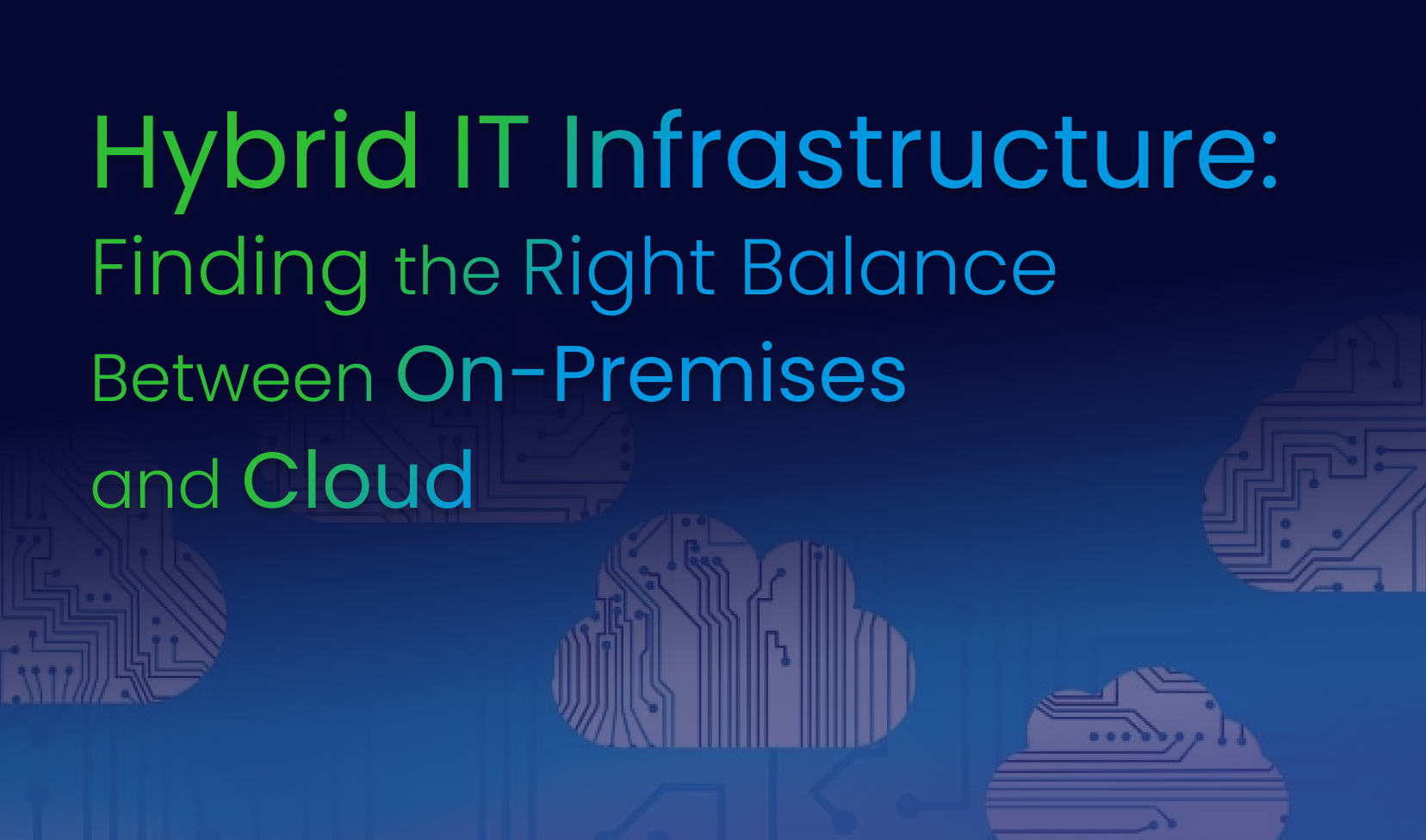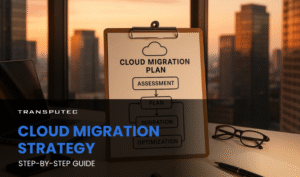As technology continues to advance, businesses are increasingly relying on IT infrastructure to support their operations, deliver services, and maintain a competitive edge. Traditionally, organisations managed their IT infrastructure solely on-premises, housing servers, networking equipment, and storage within their own physical locations. However, with the advent of cloud computing, businesses have gained access to scalable, flexible, and cost-effective solutions that can be accessed remotely over the internet.
Understanding Hybrid IT Infrastructure
Hybrid IT infrastructure refers to a strategic approach that combines both on-premises and cloud-based services to create a cohesive and efficient IT environment. This approach allows businesses to leverage the benefits of both worlds, addressing their specific needs while optimising performance, scalability, and security. By seamlessly integrating on-premises infrastructure with cloud resources, organisations can achieve a highly adaptable and resilient IT setup.
The Benefits of Hybrid IT Infrastructure
Flexibility and Scalability
One of the primary advantages of hybrid IT infrastructure is its inherent flexibility and scalability. With a hybrid model, businesses have the freedom to scale their resources up or down based on demand. They can dynamically allocate workloads between on-premises servers and cloud platforms, ensuring optimal performance and cost efficiency. This flexibility enables organisations to respond quickly to changing market conditions and efficiently manage seasonal fluctuations in demand.
Cost Optimisation
Hybrid IT infrastructure offers cost optimisation opportunities by allowing businesses to choose the most cost-effective approach for each aspect of their IT operations. On-premises infrastructure can be utilised for critical applications that require strict control or compliance, while non-sensitive workloads can be shifted to the cloud, where costs can be more easily managed. This combination ensures that businesses achieve the desired level of control, security, and cost-efficiency.
Enhanced Security and Compliance
By adopting a hybrid IT infrastructure, organisations can address security and compliance requirements effectively. Sensitive data and critical applications can be kept within the confines of the on-premises environment, providing greater control and reducing exposure to potential threats. At the same time, non-sensitive workloads can be securely hosted in the cloud, benefiting from the advanced security measures and expertise of cloud service providers.
Considerations for Hybrid IT Infrastructure
While hybrid IT infrastructure offers numerous advantages, it’s important to consider certain factors before embarking on this transformative journey.
Integration Challenges
Integrating on-premises and cloud resources can present technical challenges, such as ensuring compatibility between different systems and applications. It’s crucial to thoroughly evaluate the compatibility of existing infrastructure with the chosen cloud platforms and plan for seamless integration.
Skill Set and Training
Hybrid IT infrastructure demands a diverse skill set that spans both traditional on-premises technologies and cloud platforms. Organisations need to ensure their IT teams possess the necessary expertise or invest in training to effectively manage and operate the hybrid environment.
Data Management and Governance
Managing data across multiple environments can be complex. Businesses must establish robust data management and governance strategies to maintain data integrity, security, and compliance. This includes defining data ownership, establishing data protection policies, and implementing efficient data backup and recovery processes.
Best Practices for Hybrid IT Infrastructure
To ensure a successful implementation of hybrid IT infrastructure, businesses should follow these best practices:
Evaluating Workload Suitability
Thoroughly analyse your organisation’s workloads to determine their suitability for the hybrid model. Critical and sensitive applications may be better suited for on-premises infrastructure, while non-critical workloads can be migrated to the cloud. This evaluation will help optimise resource allocation and enhance performance.
Choosing the Right Cloud Model
Select the most suitable cloud model based on your organisation’s requirements. Public, private, and hybrid clouds each offer unique advantages. Assess your needs for scalability, security, and compliance to make an informed decision.
Implementing Effective Data Backup and Recovery Strategies
Data protection is paramount in a hybrid IT infrastructure. Implement robust backup and recovery solutions that encompass both on-premises and cloud environments. Regularly test the recovery process to ensure data availability and integrity.
Pros vs. Cons: On-Premises vs. Cloud
On-Premises Pros
- Complete control over infrastructure
- Direct physical access to servers and equipment
- Enhanced data security for critical applications
On-Premises Cons
- High initial capital investment
- Limited scalability
- Maintenance and upgrade responsibilities
Cloud Pros
- Scalability and flexibility
- Cost-effective pay-as-you-go pricing
- Automated updates and maintenance
Cloud Cons
- Dependency on internet connectivity
- Potential data privacy and security concerns
- Limited control over infrastructure
Conclusion
Finding the right balance between on-premises and cloud infrastructure is crucial for businesses looking to optimise their IT operations. Hybrid IT infrastructure offers a compelling solution by combining the best of both worlds. It allows organisations to leverage the benefits of cloud computing while retaining control, security, and compliance over critical applications and data. By following best practices, carefully evaluating workloads, and considering the pros and cons of each approach, businesses can build a robust and efficient hybrid IT infrastructure.
To take the next step in transforming your IT infrastructure, get in touch with our experts at Transputec. Contact us today to explore how our tailored solutions can help you achieve your business goals.







